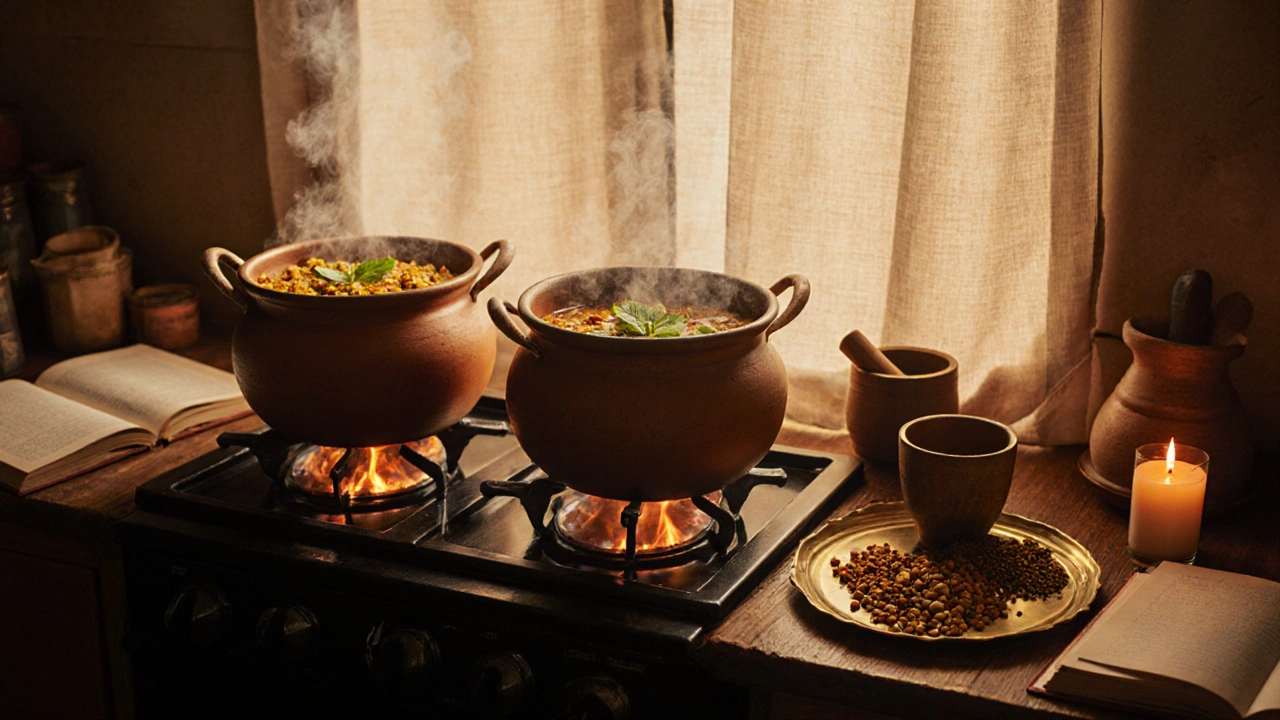Ayurvedic Eating: Traditional Indian Diet Practices for Modern Health
When you hear Ayurvedic eating, a holistic dietary system from ancient India that matches food to your body type, or dosha, to promote digestion and balance. Also known as Ayurvedic diet, it doesn’t just tell you what to eat—it tells you when, how, and why to eat it. This isn’t another fad diet. It’s a 5,000-year-old system still used in homes across India, from Mumbai kitchens to rural Tamil Nadu villages, where meals are planned around digestion, season, and energy—not calories.
Ayurvedic eating ties directly to your body type: Vata, Pitta, or Kapha. If you’re always cold and anxious, you’re likely Vata-dominant and need warm, oily, grounding foods like ghee, rice, and cooked apples. If you’re fiery and prone to acid reflux, you’re Pitta-dominant and should avoid spicy curry or citrus. Kapha types, who feel sluggish or gain weight easily, need light, bitter, and astringent foods like leafy greens and lentils. This isn’t guesswork—it’s personalized nutrition based on how your body actually responds. Many people try Ayurvedic cleanse, a detox protocol, often called Panchakarma, that uses herbal oils, steam, and fasting to reset digestion. Also known as Panchakarma, it’s not for everyone. Some feel refreshed. Others get dizzy, nauseous, or worse—especially if they’re on medication or have thyroid issues. That’s why knowing your dosha matters before jumping in. And while herbs like turmeric, ashwagandha, and triphala are common in Ayurvedic meals, taking too many herbal supplements, natural remedies often sold as powders, teas, or capsules to support digestion, sleep, or immunity. Also known as Ayurvedic herbs, they can clash with blood pressure drugs, thyroid meds, or even birth control pills can be risky. One study from AIIMS Delhi found nearly 1 in 5 patients on chronic meds had unexpected reactions from mixing Ayurvedic powders with their prescriptions.
What you won’t find in Ayurvedic eating? Sugar-heavy snacks, processed oils, or midnight snacks. Meals are timed. Breakfast is light. Lunch is the biggest meal—when digestion is strongest. Dinner is early and simple. Spices aren’t just for flavor; cumin aids digestion, coriander cools Pitta, and ginger wakes up sluggish Kapha. You don’t need to become a monk to follow this. Just start with one change: eat your main meal before 7 PM. Notice how you feel the next day. That’s the real test—not a blog post or a guru’s opinion. Below, you’ll find real stories from people who tried Ayurvedic eating, what worked, what backfired, and the side effects no one talks about until it’s too late.





